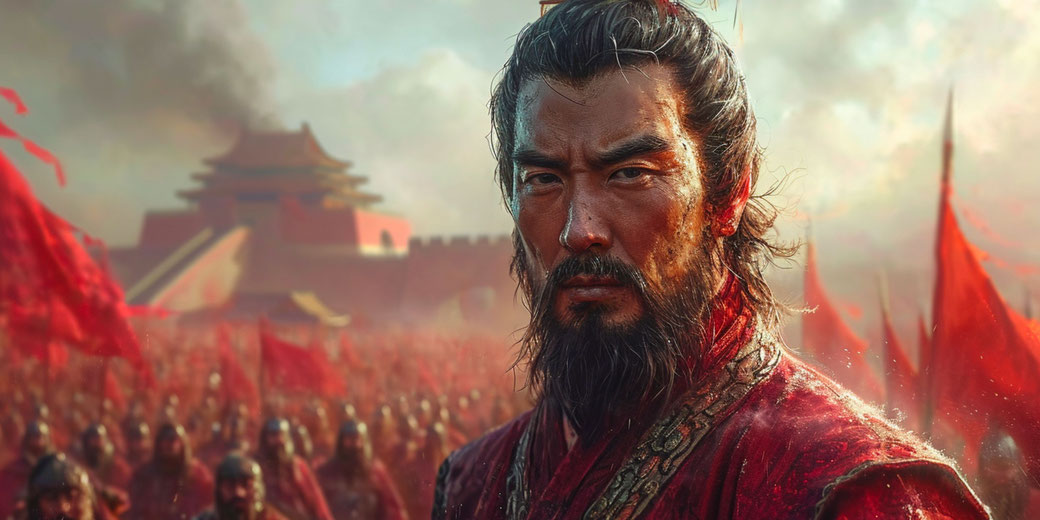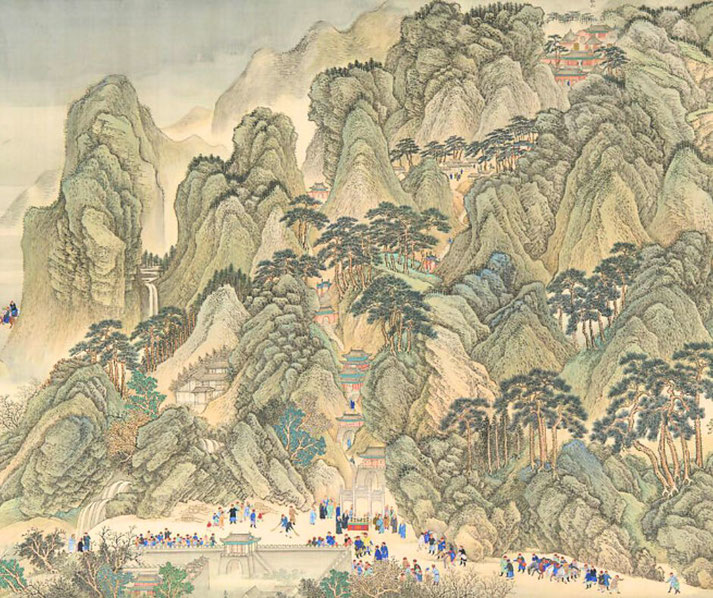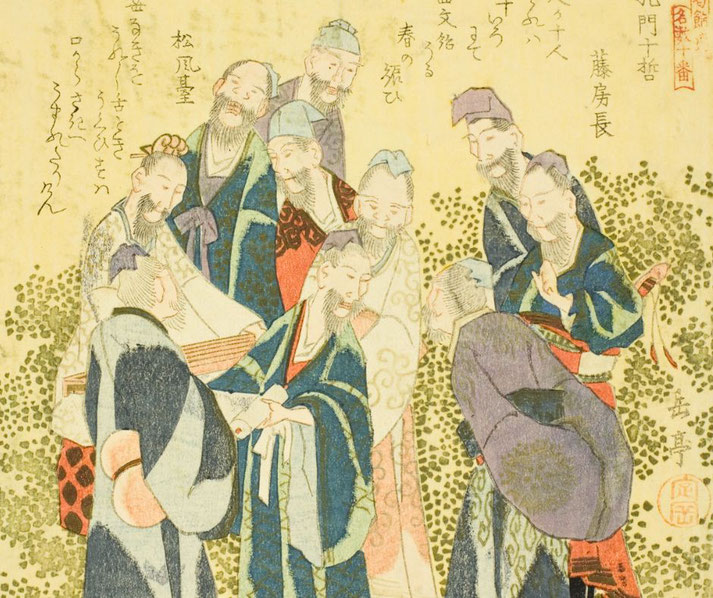Ancient China's game of thrones: The turbulent Warring States period

The Warring States Period was a violent chapter in ancient Chinese history, which spanned from 475 BC to 221 BC. This era also witnessed unparalleled advancements in military tactics, economic systems, and cultural thought.
As kingdoms clashed and alliances shifted, the foundations for modern China were being laid amidst the chaos of battle and the whispers of philosophers.
But what drove these states to relentless conflict?
How did their struggles redefine the fabric of Chinese society?
And how did the intellectual movements of the time influence the political and social landscape?
Who was fighting during the Warring States period?
The political landscape of the Warring States Period was dominated by seven major states: Qin, Chu, Zhao, Wei, Han, Yan, and Qi.
Each state, governed by its ruler and aristocracy, operated with a considerable degree of autonomy, often at the expense of the Zhou Dynasty's dwindling central authority.
The rivalry among these states was ideological, influencing their governance, military strategies, and alliances.
The State of Qin, under leaders like Duke Xiao and his advisor Shang Yang, implemented sweeping reforms that strengthened the state's military and bureaucratic efficiency.
These reforms, later continued by King Zheng, who became Qin Shi Huang, the first Emperor of China, played a crucial role in Qin's eventual dominance.
In the eastern regions, the State of Qi was known for its economic strength and military prowess. Under King Wei of Qi, who reigned 356-320 BC, it became one of the strongest states.
The State of Chu, one of the largest and most culturally rich states, was a major player in the south, with its rulers like King Zhuang becoming famous for their military campaigns.
The State of Zhao, known for its military innovations, was led by capable leaders like King Wuling, who adopted nomadic-style cavalry tactics that were revolutionary for the time.
Similarly, the State of Wei, under the rule of rulers like Marquis Wen and Marquis Wu, saw significant advancements in law and governance.
The State of Yan, though geographically isolated in the northeast, played a crucial role in the politics of the era, especially under the rule of King Zhao of Yan.
The State of Han, although smaller and less powerful than its contemporaries, was a significant player in the intricate balance of power during this period.
The political dynamics of this era were further complicated by the presence of influential strategists and advisors.
Figures such as Sun Bin, a military strategist in Qi, and Fan Sui in Qin, were instrumental in shaping the military and diplomatic strategies of their respective states.
Interstate relations were characterized by a mix of diplomacy, strategic marriages, and frequent warfare.
Alliances were often temporary and formed with the objective of countering the influence of a more dominant state.
The constant state of flux in these alliances made the Warring States Period one of the most dynamic and unpredictable eras in Chinese history.

What kind of armies did they use?
One of the most notable developments was the introduction and refinement of iron weaponry.
Iron swords, spears, and armor replaced bronze equivalents, offering greater durability and efficiency in battle.
This technological shift allowed for larger and more powerful armies equipped with superior weapons.
The period also saw the emergence of cavalry units as critical components of military forces.
The State of Zhao, under King Wuling in the 4th century BC, was particularly influential in adopting cavalry warfare, inspired by the nomadic tribes of the north.
This innovation provided greater mobility and speed, transforming battlefield tactics.
Another significant advancement was the development of crossbows, which offered a greater range and penetrating power than traditional bows.
The mass deployment of crossbowmen in armies gave states like Qin a distinct advantage in battles.
Siege warfare also evolved, with the construction of scaling ladders, siege towers, and other equipment designed to breach city walls, a technique frequently employed during the numerous sieges of the period.
The Warring States Period also saw the rise of larger infantry formations and the use of more sophisticated battle formations.
The military treatise The Art of War attributed to Sun Tzu, which was written during or just before this era, reflects the strategic thinking and tactical approaches prevalent at the time.
This text, emphasizing strategy, espionage, and psychological warfare, greatly influenced military tactics not just in China but across the world.
The culmination of these military advancements was evident in the campaigns of the Qin state, which, under leaders like King Zheng, utilized superior military tactics, technology, and organization to conquer the other warring states.
This culminated in 221 BC with the unification of China under the Qin Dynasty, marking the end of the Warring States Period.
One of the era's most significant battles was the Battle of Changping in 260 BC, where the State of Qin defeated the State of Zhao.
This battle involved hundreds of thousands of soldiers and was notable for the use of strategic encirclement, leading to a decisive Qin victory and significantly weakening Zhao.
It was one of the deadliest conflicts in ancient China, with estimates suggesting that over 400,000 Zhao soldiers surrendered to Qin forces, only to be executed in a brutal act of psychological warfare meant to deter future resistance.
The Zhou Dynasty officially ended in 256 BC when Qin destroyed the last vestiges of Zhou rule, removing the nominal authority that had persisted since the beginning of the Warring States Period.

The dramatic changes in Chinese society
This period witnessed the proliferation of the Hundred Schools of Thought, a term that encapsulates the diverse range of philosophies and ideologies developed during this time.
Among these, Confucianism, founded by Confucius (551-479 BC), emphasized moral integrity, social harmony, and the importance of education.
Confucius' teachings focused on ethics, proper conduct, and the role of benevolent governance, profoundly influencing Chinese society and politics.
Taoism, another significant philosophy from this era, was developed by Laozi.
His work, the Tao Te Ching, emphasized harmony with the Tao (the Way), advocating for a life of simplicity, naturalness, and non-interference.
Taoism offered a contrasting worldview to the more socially-oriented Confucianism, focusing on individual spirituality and harmony with nature.
Legalism, particularly influential in the state of Qin, advocated for a system of strict laws and authoritarian governance, as seen in the works of Han Feizi and Li Si.
This philosophy played a crucial role in Qin's eventual unification of China, as it provided a theoretical basis for centralizing power and enforcing strict legal control.
Intellectually, this era also saw advancements in literature, art, and science.
The period’s instability and diversity of thought contributed to a flourishing of literary works, including poetry, historical texts, and philosophical treatises.
The strategies and historical accounts from this period provided valuable insights into the political and military tactics of the time.
Art and architecture also evolved, with greater emphasis on intricate designs and symbolism.
Despite the ongoing conflicts, states invested in large-scale projects, including palaces and city walls, reflecting their power and influence.
Science and technology saw notable developments, especially in areas like agriculture, metallurgy, and astronomy.
These advancements were often driven by the practical needs of the states, such as improving agricultural output to support larger populations and armies, or understanding celestial phenomena for calendrical purposes.

How the Warring States period ended
The State of Qin, located on the western frontier of the Warring States, began its rise to power under the rule of King Zhaoxiang, who ascended the throne in 306 BC.
Over the years, Qin adopted Legalist principles, which emphasized strict laws and centralization of power.
This was further reinforced by Shang Yang’s reforms in the late 4th century BC, which strengthened the state's military and administrative efficiency.
The pivotal moment in Qin’s ascension came under the rule of King Zheng, who became king in 246 BC at the age of 13.
Under his leadership, and with the guidance of capable advisors like Li Si, Qin embarked on a series of military campaigns against the other states.
The strategies employed by Qin were not only military but also diplomatic, involving a mix of alliances, betrayals, and strategic planning.
One by one, the states fell to Qin’s might. Zhao fell in 228 BC and Yin in 226 BC. A key victory was the defeat of the powerful State of Chu in 223 BC.
This victory was significant, as Chu was one of the largest and most formidable states.
The conquest of the other states continued, with the State of Qi being the last to fall in 221 BC.
With the defeat of Qi, King Zheng proclaimed himself Qin Shi Huang, meaning the First Emperor of Qin, thus marking the end of the Warring States Period and the beginning of the Qin Dynasty.
He implemented a series of reforms to consolidate his rule, including standardizing the writing system, currency, weights, and measures, and building an extensive network of roads and canals to unify and strengthen the empire.

The unification under the Qin Dynasty, though short-lived, had a profound impact on Chinese history.
It established the framework for the imperial system that would dominate China for the next two millennia.
The administrative and bureaucratic reforms implemented during this time laid the foundation for the centralized state governance that characterized subsequent dynasties.
What do you need help with?
Download ready-to-use digital learning resources
Copyright © History Skills 2014-2025.
Contact via email
With the exception of links to external sites, some historical sources and extracts from specific publications, all content on this website is copyrighted by History Skills. This content may not be copied, republished or redistributed without written permission from the website creator. Please use the Contact page to obtain relevant permission.





